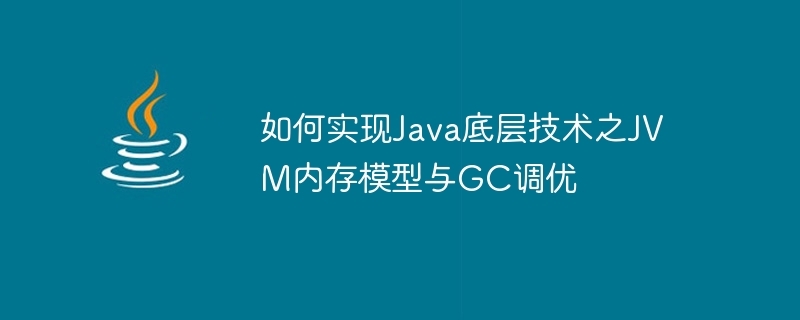

How to implement the JVM memory model and GC tuning of Java's underlying technology
Introduction:
As a widely used programming language, Java's underlying technology is It is crucial for developers. Among them, the JVM's memory model and GC tuning are very critical parts. This article will introduce the relevant knowledge of JVM memory model and GC tuning in detail, with specific code examples.
1. JVM memory model
The JVM memory model is the memory layout used by the Java Virtual Machine (JVM) during runtime. It consists of multiple parts such as program counter, virtual machine stack, local method stack, heap and method area.
2. GC Tuning
GC (Garbage Collection) is a part of memory management in Java. It is responsible for recycling objects that are no longer used to release memory space. GC tuning can improve program performance.
Sample code:
The following is a simple sample code that demonstrates how to optimize GC performance by adjusting the memory parameters of the JVM and selecting an appropriate garbage collector.
public class GCExample {
public static void main(String[] args) {
// 设置堆的最大可用内存为512MB
//-Xmx512m
// 设置堆的初始大小为256MB
//-Xms256m
// 执行一些耗时操作
// 创建大对象,占用较多内存
byte[] bigObject = new byte[100 * 1024 * 1024];
// 执行一些其他操作
// 手动调用垃圾回收
System.gc();
}
}Conclusion:
This article introduces the relevant knowledge of JVM memory model and GC tuning of Java's underlying technology. By understanding the JVM memory model and the principles of GC tuning, and using sample code to demonstrate how to optimize GC performance. By properly adjusting the memory parameters of the JVM and selecting an appropriate garbage collector, the performance of Java programs can be improved. I hope this article will be helpful to Java developers in their learning and practice of underlying technologies.
The above is the detailed content of How to implement JVM memory model and GC tuning of Java underlying technology. For more information, please follow other related articles on the PHP Chinese website!




